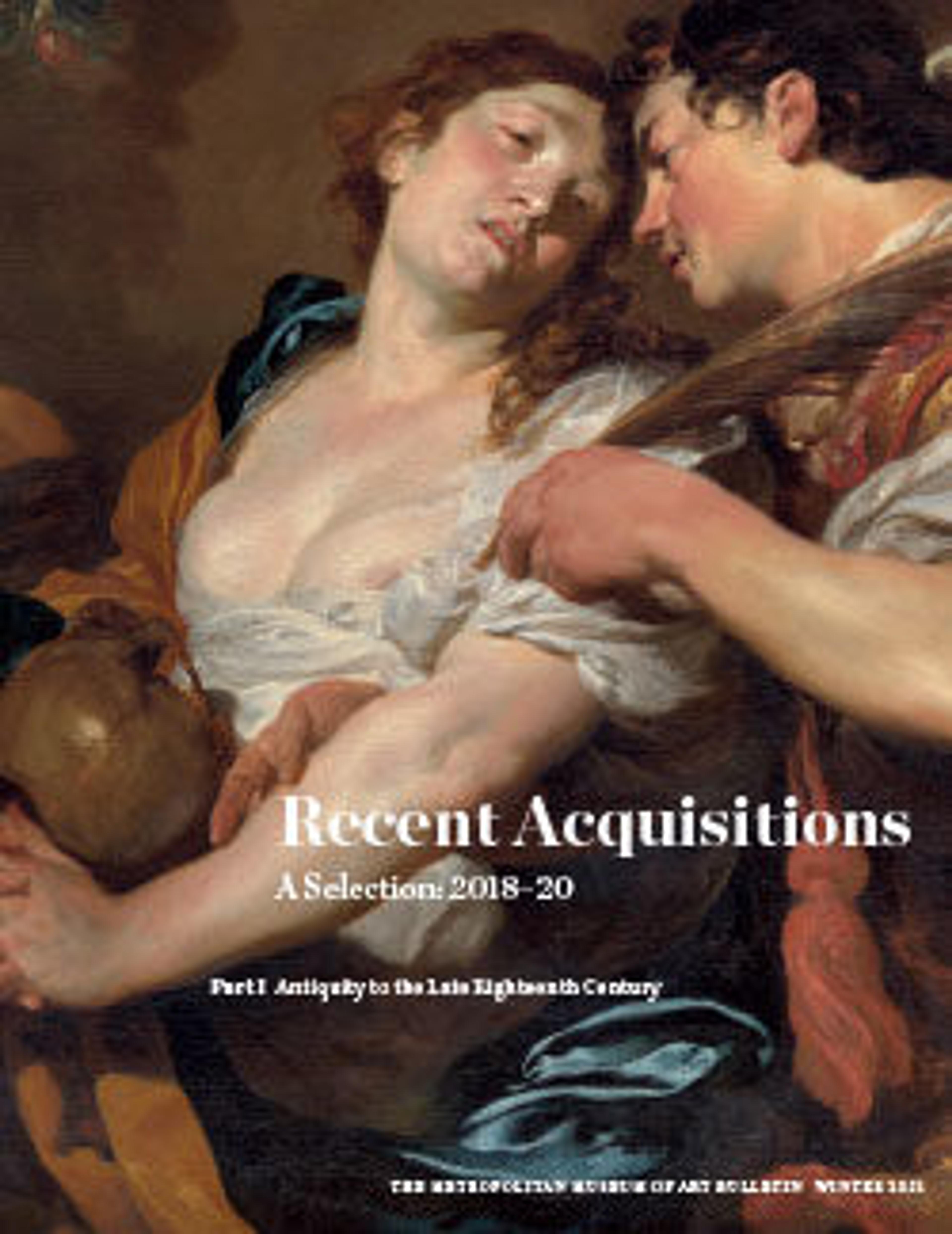Hilt of a Gauntlet Sword (Pata)
A weapon unique to India, the gauntlet sword, or pata, is characterized by a hilt that fits snugly over the hand, wrist, and lower forearm like a rigid metal gauntlet, typically fitted with a long, straight, double-edged European blade. The majority of such hilts have a smooth outline comprising a bulbous section and a flaring semi-conical cuff. Often they are embellished with chiseled, raised, and pierced ornament, alone or in conjunction with damascening in gold or silver, differing widely in the extent and quality of the decoration.
Very few gauntlet swords, however, have hilts that are embossed to represent animals, actual or mythical. Most of these are executed in steel, with the figures rendered in low relief in a very stylized fashion. This hilt is exceptional for its naturalistic rendering, worked almost fully in the round, of the lifelike head of an elephant with its tusks raised and its trunk extended, possibly representing the elephant-headed Hindu god, Ganesha. The fact that this hilt is made of copper alloy, rather than steel, strongly suggest that it was intended for ceremonial or ritual use and not for the battlefield.
Very few gauntlet swords, however, have hilts that are embossed to represent animals, actual or mythical. Most of these are executed in steel, with the figures rendered in low relief in a very stylized fashion. This hilt is exceptional for its naturalistic rendering, worked almost fully in the round, of the lifelike head of an elephant with its tusks raised and its trunk extended, possibly representing the elephant-headed Hindu god, Ganesha. The fact that this hilt is made of copper alloy, rather than steel, strongly suggest that it was intended for ceremonial or ritual use and not for the battlefield.
Artwork Details
- Title: Hilt of a Gauntlet Sword (Pata)
- Date: 17th–18th century
- Culture: Indian
- Medium: Copper alloy, iron
- Dimensions: L. 16 in. (40.6 cm); W. 3 7/8 in. (9.8 cm); D. 3 1/2 in. (8.9 cm); Wt. 1 lb. 9.6 oz. (724 g)
- Classification: Swords-Parts
- Credit Line: Gift of Jeri and Charles Garbaccio, 2019
- Object Number: 2019.374
- Curatorial Department: Arms and Armor
More Artwork
Research Resources
The Met provides unparalleled resources for research and welcomes an international community of students and scholars. The Met's Open Access API is where creators and researchers can connect to the The Met collection. Open Access data and public domain images are available for unrestricted commercial and noncommercial use without permission or fee.
To request images under copyright and other restrictions, please use this Image Request form.
Feedback
We continue to research and examine historical and cultural context for objects in The Met collection. If you have comments or questions about this object record, please contact us using the form below. The Museum looks forward to receiving your comments.
